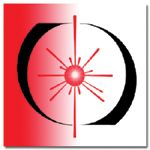Determination of Low Concentration Methanol in Alcohol by Affordable High Sensitivity Raman Instrument
Low concentration natural methanol exists in most alcoholic beverages and usually causes no immediate health threat.
Duyen Nguyen and Eric Wu, Enwave Optronics, Inc.
Low concentration natural methanol exists in most alcoholic beverages and usually causes no immediate health threat. Nevertheless, it is possible to have natural occurring methanol in beverages with concentration as high as 18 grams per liter of ethanol; or equivalent to 0.72% methanol in 40% ethanol, in alcohol (1). Current EU regulation limits naturally occurring methanol to below 10 grams per liter of ethanol; or equivalent to 0.4% methanol in 40% ethanol.
Raman spectroscopy has been shown to be an effective tool in compositions analysis as well as adulteration identifications in foods (2). In the alcoholic beverage industry, the standard composition analysis method were more expensive and time-consuming gas chromatography (3). Here, we present a Raman spectroscopy method for a quick and lower cost alternative to verify the existence of low concentration methanol in alcohol.
Experiment
40% ethanol/water solution was prepared sing 200-proof ethanol and distilled water. HPLC grade methanol was added into the 40% ethanol solution to make samples with methanol concentration ranging from 50 ppm to 2.5%. An Enwave Optronics' ProRaman instrument with laser excitation at 785 nm was used for the measurements. The sample solutions were measured in quartz cuvette in a sample holder. Figure 1 depicts the results of the measured spectra in the fingerprint region of the Raman spectra.

Figure 1
Partial least square (PLS) regression method was used for calibration and prediction model for methanol. The spectral region from 950–1200 cm-1 was chosen for developing the calibration model. The actual vs. predicted concentration value of methanol is shown in Figure 2. It is shown that the measured data and PLS prediction match very well with correlation coefficient R2 @ 0.997.

Figure 2
Conclusion
An affordable, high sensitivity ProRaman instrument was used with PLS method to successfully analyze low concentration methanol in 40% alcohol. Based on our findings, the detection limit for methanol in 40% of ethanol is much better than 50 ppm and reliable quantitative determination using PLS prediction could reach 50 ppm of methanol in 40% alcohol.
References
(1) 1Bindler F, Voges E, Laugel P. "The problem of methanol concentration admissible in distilled fruit spirits." Food Addit Contam 1988: 5: 343–351.
(2) Mackenzie, W.M. and Aylott, R.I. "Analytical strategies to confirm Scotch whisky authenticity." The Analyst (2004), 129 : 607–612.
(3) Reid, L.M., O'Donnell, C.P., Downey, G. "Recent technological advances for the determination of food authenticity." Trends in Food Science & Technology (2006), 17: 344–353.

Enwave Optronics, Inc.
18200 McDurmott St., Suite B, Irvine, CA 92614
tel. (949) 955-0258; fax (949) 955-0259
Website: www.enwaveopt.com

AI-Powered SERS Spectroscopy Breakthrough Boosts Safety of Medicinal Food Products
April 16th 2025A new deep learning-enhanced spectroscopic platform—SERSome—developed by researchers in China and Finland, identifies medicinal and edible homologs (MEHs) with 98% accuracy. This innovation could revolutionize safety and quality control in the growing MEH market.
Nanometer-Scale Studies Using Tip Enhanced Raman Spectroscopy
February 8th 2013Volker Deckert, the winner of the 2013 Charles Mann Award, is advancing the use of tip enhanced Raman spectroscopy (TERS) to push the lateral resolution of vibrational spectroscopy well below the Abbe limit, to achieve single-molecule sensitivity. Because the tip can be moved with sub-nanometer precision, structural information with unmatched spatial resolution can be achieved without the need of specific labels.
New Raman Spectroscopy Method Enhances Real-Time Monitoring Across Fermentation Processes
April 15th 2025Researchers at Delft University of Technology have developed a novel method using single compound spectra to enhance the transferability and accuracy of Raman spectroscopy models for real-time fermentation monitoring.
AI-Driven Raman Spectroscopy Paves the Way for Precision Cancer Immunotherapy
April 15th 2025Researchers are using AI-enabled Raman spectroscopy to enhance the development, administration, and response prediction of cancer immunotherapies. This innovative, label-free method provides detailed insights into tumor-immune microenvironments, aiming to optimize personalized immunotherapy and other treatment strategies and improve patient outcomes.